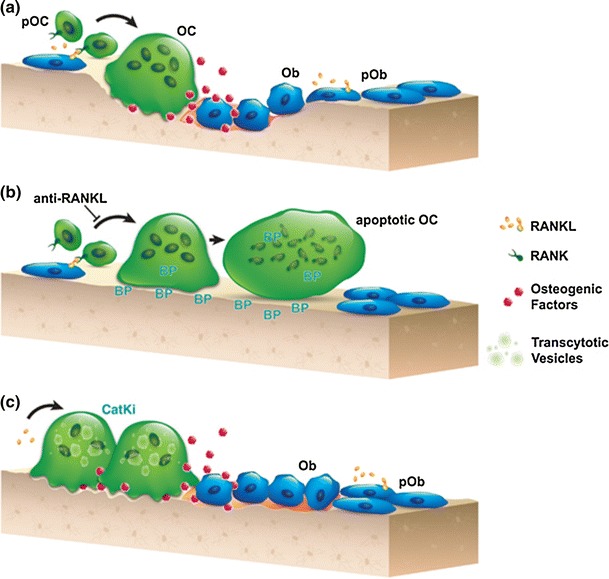Fig. 1.

Schematic representations of a the normal coupling process of bone resorption and formation during the remodeling process. RANKL promotes differentiation and activation of osteoclasts at remodeling sites. Coupling factors derived from the resorbed bone matrix or directly from the activated osteoclasts stimulate the recruitment and maturation of osteoblasts to initiate bone formation on the existing resorption surface. b Denosumab blocks osteoclastogenesis, and bisphosphonate induces the loss of ruffled border and eventual osteoclast apoptosis. These therapies lead to little-to-no resorption surface and fewer numbers of osteoclasts on bone. c Treatment with a CatK inhibitor reduces osteoclastic resorption efficiency and retards transcytotic trafficking of matrix removal. This does not prevent other osteoclast functions, such as the generation of a shallow resorption surface and the release of osteogenic factors; together, these functions initiate osteoblast bone formation. BP bisphosphonate, CatKi cathepsin K inhibitor, Ob osteoblast, OC osteoclast, pOb osteoblast progenitor, pOC osteoclast progenitor, RANK receptor activator of nuclear factor kappa-B, RANKL RANK ligand. Reproduced with permission from [17]
